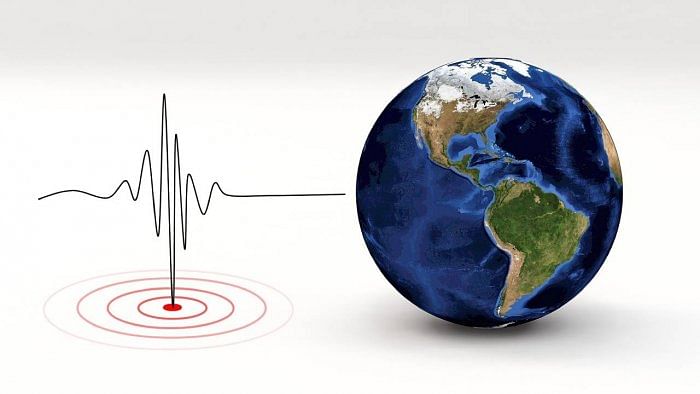
Early morning on May 19, a 7.7 magnitude earthquake struck the French territory of New Caledonia in the Southern Pacific Ocean. A tsunami warning, which was initially issued for several Pacific island nations, was later called off and no casualties were reported. As most people know, the famous Pacific 'Ring of Fire' is a hotspot of seismic activity. In this article, Deccan Herald explains how these earthquakes are recorded and how their magnitudes are determined.
According to the United States Geological Survey (USGS), the process of recording earthquakes involves a network of seismometers deployed worldwide. Seismometers, also called seismographs, are sensitive instruments designed to detect the movement in tectonic plates and consist of a mass suspended by springs or pendulums, which remain more or less stable during calm periods. However, when the plates move and seismic waves pass through the seismometer, they cause the mass to vibrate, and these vibrations are recorded.
When the tectonic plates move, each seismic station in the network measures the movement of the ground at that site. When an earthquake strikes, data is collected and analysed by various scientific institutions, including India's National Center for Seismology (under the Ministry of Earth Sciences) and the European-Mediterranean Seismological Centre (EMSC).
The magnitude of an earthquake represents the amount of energy released during the quake. The most popularly used scales are the Richter and Moment magnitude scales (Mw). The Richter scale, developed by Charles Richter in the 1930s, has limitations for measuring larger earthquakes and is not suitable for measuring quakes that have their origin far from the seismometers. The USGS website reads, "The Richter scale is an outdated method for measuring magnitude that is no longer used by the USGS for large, teleseismic earthquakes".
The Moment magnitude scale (Mw), in contrast, "gives the most reliable estimate of earthquake size" for larger quakes, per USGS. According to the Michigan Technological University, "Moment is a product of the distance a fault moved and the force required to move it. It is derived from modelling recordings of the earthquake at multiple stations. Moment magnitude estimates are about the same as Richter magnitudes for small to large earthquakes. But only the moment magnitude scale is capable of measuring M8 (read "magnitude 8") and greater events accurately". To calculate the moment magnitude, scientists consider the amplitude and duration of various types of seismic waves, the distance between the seismometer and the earthquake source, as well as the geological properties of the region.
Accurate monitoring of tectonic activity is essential for assessing risks and enhancing preparedness for potential earthquakes and resultant tsunamis.